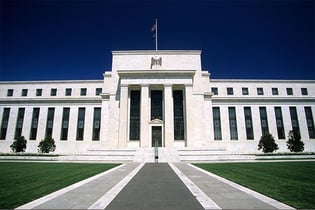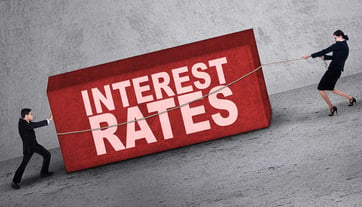With such a noteworthy bounce-back from the Great Recession and the economy on fairly solid ground, there’s been no surprise that the Fed has tightened monetary policy over the last year.
 The Federal Reserve raised rates for the third time in 2018 at its September meeting, bringing rates to 2.18%.
The Federal Reserve raised rates for the third time in 2018 at its September meeting, bringing rates to 2.18%.
Yet, while rising interest rates tend to dampen the commercial real estate market we’ve seen little impact on real estate values and availability of capital over the past year.
The key has been that the Fed has been careful not to increase rates too drastically. Despite the hikes, the market remains at a relatively low historic level and commercial real estate values seem to be holding steady.
A number of factors may help to protect commercial real estate performance, including cap rate, spreads over the US 10-year Treasury yield, and the outlook for economic growth and real estate market fundamentals.
If interest rates are rising because of stronger economic growth, as is currently the case, real estate demand will also likely grow. The economic recovery has tightened vacancy significantly across all major property types, while construction balanced with demand has prompted considerable growth in rental rates.
And fears of growing U.S. inflation have been somewhat calmed in recent weeks, as the consumer price index rose 0.3 percent in October, and the core CPI came in lower than the previous reading of 2.2 percent.
These data come as a relief for investors as they have contended with worries of rising interest rates. Investors worry that rising inflation will lead the Fed to tighten policy at a faster-than-expected pace.
 While rate hikes are expected to continue, they will likely be implemented steadily with five increases expected between now and the end of 2020.
While rate hikes are expected to continue, they will likely be implemented steadily with five increases expected between now and the end of 2020.
The anticipated rise of retail/consumer spending this holiday season, historically low unemployment, and rising wage growth are all signs of the strength of the economy evidenced by third-quarter GDP growth of 3.5 percent. It’s also a sign that the Fed will continue to normalize.
The Fed has been transparent about its rate hikes this past year and there’s no reason to believe that will change over the next four quarters, allowing investors and developers to account for future changes in their projections.
And despite rising borrowing costs creating a slightly more challenging lending environment, it seems to be offset by a booming economy and looser bank regulations.
Most lenders are still priced low enough to remain attractive and not alter the velocity of transactions or lender allocations. That being said, the availability of capital should remain strong in the coming months.
Overall, as we head into 2019, economic strength, capital priced for the long-term, and steady NOI growth and property values should help the commercial real estate market remain strong.







